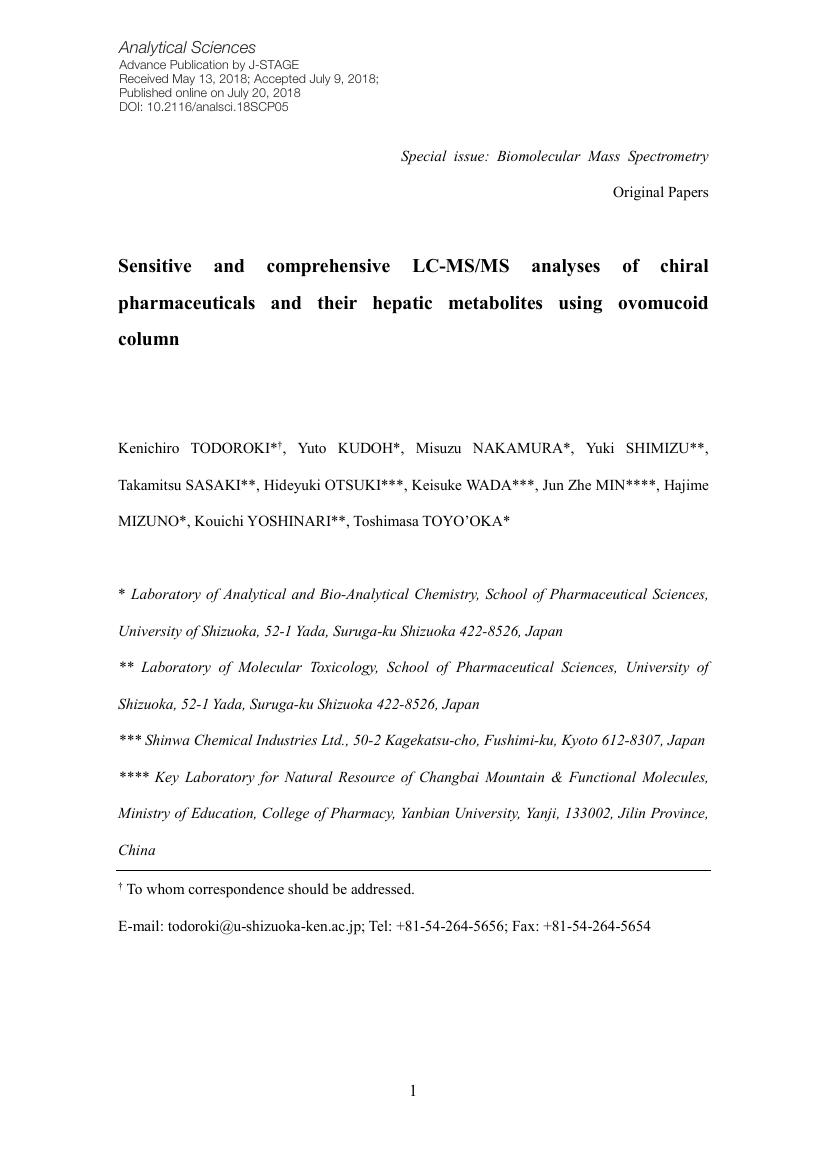- 著者
- Yusuke Aratsu Reo Odagiri Rie Shoji Kouki Watanabe Takeshi Kumagai Sawako Shindo Takamitsu Sasaki Kiyoshi Nagata
- 出版者
- The Japanese Society of Toxicology
- 雑誌
- Fundamental Toxicological Sciences (ISSN:2189115X)
- 巻号頁・発行日
- vol.4, no.5, pp.229-239, 2017-10-05 (Released:2017-10-05)
- 参考文献数
- 27
- 被引用文献数
- 1 1
CYP3A4 is an important drug-metabolizing enzyme induced by various compounds causing drug-drug interactions. However, the molecular mechanism of CYP3A4 induction is not completely understood. CYP3A4 induction is caused by pregnane X receptor (PXR) through binding to some PXR binding elements. These elements comprise an everted repeat separated by six nucleotides in the promoter region and distal nuclear receptor binding element 1 (dNR-1) as well as the essential distal nuclear receptor binding element for CYP3A4 induction (eNR3A4) in the enhancer region of the CYP3A4 gene. Recently, we found that polycyclic aromatic hydrocarbons including anthracene induce CYP3A4 in HepG2 cells with a different induction profile from that of rifampicin (RF), a typical PXR ligand. When a CYP3A4 reporter plasmid in which the eNR3A4 DNA fragment binds directly to the CYP3A4 promoter (-362 bases) was evaluated in a reporter assay, dibenz[a,h]anthracene (DBA) induced reporter activity, while RF did not. To be induced reporter activity by RF, more 14 nucleotides 5′ upstream of the eNR3A4 (rifampicin eNR3A4: reNR3A4) DNA fragment were required. However, eNR3A4 and reNR3A4 did not respond to recombinant PXR without dNR-1. These results suggest that eNR3A4 and reNR3A4 are necessary for CYP3A4 induction by DBA and RF, respectively, and that dNR-1 is indispensable for full induction through PXR.
- 著者
- Kenichiro TODOROKI Yuto KUDOH Misuzu NAKAMURA Yuki SHIMIZU Takamitsu SASAKI Hideyuki OTSUKI Keisuke WADA Jun Zhe MIN Hajime MIZUNO Kouichi YOSHINARI Toshimasa TOYO’OKA
- 出版者
- The Japan Society for Analytical Chemistry
- 雑誌
- Analytical Sciences (ISSN:09106340)
- 巻号頁・発行日
- pp.18SCP05, (Released:2018-07-20)
- 被引用文献数
- 6
- 著者
- Takuya Kuwahara Yukino Baba Hisashi Kashima Takeshi Kishikawa Junichi Tsurumi Tomoyuki Haga Yoshihiro Ujiie Takamitsu Sasaki Hideki Matsushima
- 出版者
- Information Processing Society of Japan
- 雑誌
- Journal of Information Processing (ISSN:18826652)
- 巻号頁・発行日
- vol.26, pp.306-313, 2018 (Released:2018-03-15)
- 参考文献数
- 17
- 被引用文献数
- 19
Modern vehicles are equipped with Electronic Control Units (ECUs) and external communication devices. The Controller Area Network (CAN), a widely used communication protocol for ECUs, does not have a security mechanism to detect improper packets; if attackers exploit the vulnerability of an ECU and manage to inject a malicious message, they are able to control other ECUs to cause improper operation of the vehicle. With the increasing popularity of connected cars, it has become an urgent matter to protect in-vehicle networks against security threats. In this paper, we study the applicability of statistical anomaly detection methods for identifying malicious CAN messages in in-vehicle networks. We focus on intrusion attacks of malicious messages. Because the occurrence of an intrusion attack certainly influences the message traffic, we focus on the number of messages observed in a fixed time window to detect intrusion attacks. We formalize features to represent a message sequence that incorporates the number of messages associated with each receiver ID. We collected CAN message data from an actual vehicle and conducted a quantitative analysis of the methods and the features in practical situations. The results of our experiments demonstrated our proposed methods provide fast and accurate detection in various cases.
